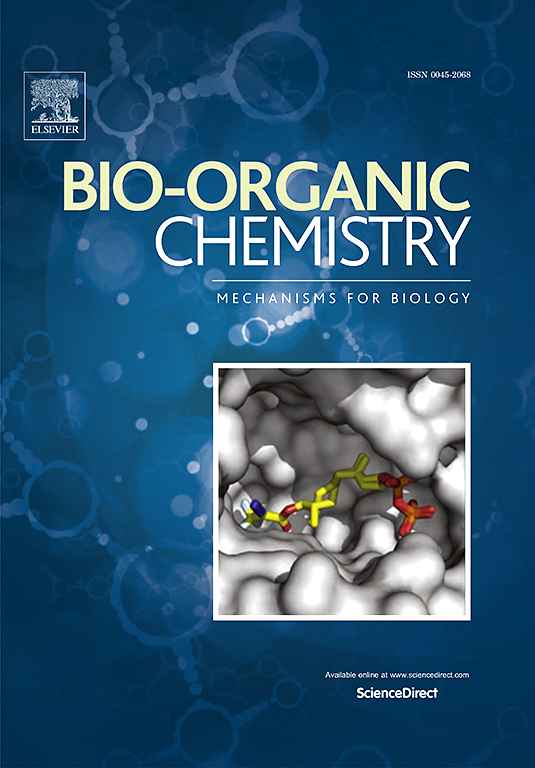Exploring Trisubstituted adenine derivatives as adenosine A1 receptor ligands with antagonist activity: Synthesis, biological evaluation and molecular modelling
IF 4.5
2区 医学
Q1 BIOCHEMISTRY & MOLECULAR BIOLOGY
引用次数: 0
Abstract
The therapeutic potential of adenosine receptor (AR) ligands is becoming increasingly important as our understanding of the physio-pathological functions of ARs advances. This study presents the synthesis and biological screening of six novel trisubstituted adenine analogues, expanding a previously reported series. The AR binding affinity and antiproliferative activity were evaluated for both the new and previously reported compounds, leading to the discovery of derivatives that displaying selective binding affinity towards hA1AR. Compounds were synthesized using a cyclization approach by combining 4,6-bisalkylamino-5-aminopyrimidines with three different trialkyl/arylorthoesters, thereby generating adenines featuring three different substituents at the 8 position: H, methyl or phenyl. Most promising derivatives presented a phenyl ring at such position and displayed selective antagonistic activity against hA1AR. N6,9-diisopropyl-8-phenyl-9H-purin-6-amine (14c) was identified as the most potent compound with a Ki of 2 nM, motivating the synthesis of new derivatives including N6,9-dicyclopentyl-8-phenyl-9H-purin-6-amine (19c). Docking modelling predicted key interactions between the lead compounds and hA1AR. Determination of their anti-proliferative activity on six cancer cell lines found 19c to be the most potent derivative with low micromolar EC50 values. Our findings support further exploration around the adenine scaffold for cancer research and AR drug development.

求助全文
约1分钟内获得全文
求助全文
来源期刊

Bioorganic Chemistry
生物-生化与分子生物学
CiteScore
9.70
自引率
3.90%
发文量
679
审稿时长
31 days
期刊介绍:
Bioorganic Chemistry publishes research that addresses biological questions at the molecular level, using organic chemistry and principles of physical organic chemistry. The scope of the journal covers a range of topics at the organic chemistry-biology interface, including: enzyme catalysis, biotransformation and enzyme inhibition; nucleic acids chemistry; medicinal chemistry; natural product chemistry, natural product synthesis and natural product biosynthesis; antimicrobial agents; lipid and peptide chemistry; biophysical chemistry; biological probes; bio-orthogonal chemistry and biomimetic chemistry.
For manuscripts dealing with synthetic bioactive compounds, the Journal requires that the molecular target of the compounds described must be known, and must be demonstrated experimentally in the manuscript. For studies involving natural products, if the molecular target is unknown, some data beyond simple cell-based toxicity studies to provide insight into the mechanism of action is required. Studies supported by molecular docking are welcome, but must be supported by experimental data. The Journal does not consider manuscripts that are purely theoretical or computational in nature.
The Journal publishes regular articles, short communications and reviews. Reviews are normally invited by Editors or Editorial Board members. Authors of unsolicited reviews should first contact an Editor or Editorial Board member to determine whether the proposed article is within the scope of the Journal.
 求助内容:
求助内容: 应助结果提醒方式:
应助结果提醒方式:


